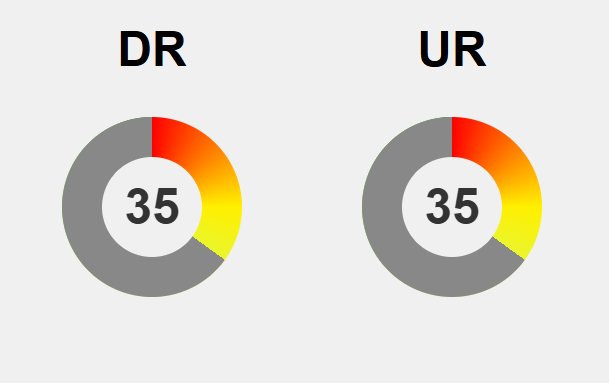Could returning to the eating patterns of our ancestors—fewer meals, stopping before fullness—unlock profound health benefits and longevity? This approach challenges our modern culture of constant snacking and overeating, instead emphasizing natural rhythms shaped by environmental cues and physical activity. By mimicking ancient cycles of feast and famine, our bodies can enhance metabolic flexibility, burn fat more efficiently, and activate cellular repair processes like autophagy. These habits may reduce inflammation, improve insulin sensitivity, and promote cellular renewal—factors linked to aging and disease prevention. The idea is simple yet powerful: listen to internal hunger cues, extend fasting windows, and embrace quality over quantity. As research continues to validate these ancestral principles, the question remains—can modest, mindful changes reconnect us with our biological roots and foster resilience in our modern lives? The answer could redefine how we approach health and longevity.
Discover How Our Ancestors’ Eating Rhythms Shape Modern Health
Our ancestors didn’t follow the three, four, or even five meals a day routine most of us are accustomed to. Instead, their eating patterns were dictated by the natural rhythms of the environment—food availability, physical activity, and the need to survive. They often ate only when food was accessible, which meant longer fasting periods and fewer meals. This wasn’t just a matter of necessity; it shaped their biology in ways that might still influence our health today.
Unlike today’s culture of constant snacking and large portions, early humans relied on internal hunger cues and environmental cues to guide their eating. They typically consumed one or two meals a day, stopping before they felt overly full. This approach naturally limited calorie intake and created extended fasting windows. Over thousands of years, these cycles of feast and famine helped develop metabolic flexibility—the ability to efficiently switch between storing and burning fat—supporting resilience in times of scarcity and abundance alike.
Our evolutionary history shows that humans thrived in environments marked by fluctuating food supplies. During lean times, their bodies became adept at conserving energy and tapping into fat reserves. When food was plentiful, they stored excess calories for future use. These adaptations fostered cellular repair, reduced inflammation, and promoted long-term health. The patterns weren’t just about survival—they encouraged a balanced relationship with food, emphasizing satisfaction over fullness and prioritizing quality over quantity.
Research from archaeological sites and modern hunter-gatherer societies reveals many groups ate only once or twice daily, stopping well before feeling full. Their food choices and eating habits were driven by seasonal availability and physical activity, keeping their bodies in harmony with nature’s cycles. This natural rhythm supported cellular renewal, immune function, and longevity—benefits rooted in centuries of human adaptation.
Today, constant access to food and a culture of overeating disrupt these ancient rhythms. Yet, understanding the core principles—fewer meals, stopping before full, and listening to internal cues—offers valuable insights. Embracing these habits can help restore metabolic health, support cellular repair, and reconnect us with our biological roots. It’s a simple shift with the potential for lasting benefits, aligning modern life more closely with the way humans thrived for millennia.
Uncover the Core Principles of Traditional, Resilient Diets
Traditional diets of our ancestors were shaped by their environment, physical activity, and seasonal food availability. They typically ate just one or two meals a day, often stopping before feeling completely full. This natural pattern limited calorie intake and created extended fasting periods, allowing their bodies to adapt over thousands of years. These cycles of feast and famine fostered metabolic flexibility—the ability to switch efficiently between storing and burning energy—making their bodies resilient in both scarcity and abundance.
Unlike today’s culture of constant snacking and oversized portions, ancestral eating relied on internal hunger cues and environmental signals rather than rigid schedules or external pressures. Early humans depended on seasonal hunting, foraging, and food availability, which dictated their eating habits. This reliance on natural rhythms kept their metabolism responsive and supported cellular repair processes, such as autophagy, during fasting periods. These habits weren’t just about survival; they actively promoted long-term health and resilience.
Fasting during lean times helped conserve energy and prompted their bodies to tap into fat reserves, fostering metabolic efficiency. These cycles strengthened their ability to adapt to unpredictable food supplies, supporting weight management and reducing inflammation. Over generations, these patterns became embedded in our biology, encouraging a balanced approach to eating—focused on satisfaction over fullness and quality over quantity.
Archaeological research and studies of modern hunter-gatherer societies reveal that many ate only once or twice a day, stopping well before feeling stuffed. Their food choices and eating habits, driven by seasonal availability and physical activity, supported optimal health and longevity. These natural rhythms promoted cellular renewal, immune function, and disease prevention—benefits rooted in centuries of human adaptation.
Today’s constant access to food and a culture of overeating disrupt these ancient rhythms, yet the core principles remain relevant. Fewer meals, stopping before full, and listening to internal hunger cues can help restore metabolic health and cellular function. Returning to these time-tested habits isn’t about deprivation; it’s about reconnecting with our biological design to foster resilience, longevity, and overall well-being.
Implementing these concepts involves simple, manageable adjustments. Prioritize two well-balanced meals spaced apart, and pay attention to stopping before you’re overly full. Extending fasting windows, such as skipping breakfast or dinner, aligns with natural rhythms. Focus on whole, nutrient-dense foods—lean proteins, healthy fats, and vegetables—that nourish your body and keep you satisfied, supporting metabolic health and reducing unnecessary snacking.
Listening to your body’s signals remains key. Instead of external cues like clocks or social expectations, tune into genuine hunger. If you’re not hungry, delay eating until the next scheduled meal. Over time, this mindful pattern fosters a healthier relationship with food, making it easier to maintain without feeling deprived. Small, consistent changes are most sustainable and lead to lasting benefits, helping you develop a natural, intuitive eating rhythm rooted in our evolutionary past.
Harness the Power of Reduced Meal Frequency for Longevity and Vitality
Reducing how often we eat can lead to significant shifts in how our bodies manage energy. When we extend the gaps between meals, insulin sensitivity tends to improve, meaning our cells respond more effectively to blood sugar. This helps stabilize blood glucose levels and lowers the risk of developing insulin resistance or type 2 diabetes over time. Fewer meals also encourage the body to tap into fat stores for fuel, promoting fat burning rather than storage—an adaptation that aligns with how our ancestors thrived during periods of scarcity.
Fewer meals can also reduce chronic inflammation, a key factor behind many age-related diseases like heart disease, arthritis, and neurodegenerative conditions. Constant eating, especially processed or sugary foods, keeps the immune system in a low-grade inflammatory state. Giving it a break through reduced meal frequency allows inflammation markers to decrease, supporting overall health. This isn’t about starving yourself but rather creating space for your body to reset, repair, and function optimally.
One of the most powerful benefits of eating less frequently is the activation of autophagy—your body’s way of cleaning out damaged cells and recycling their components. During fasting periods, this process accelerates, promoting cellular renewal and longevity. By stopping before you’re overly full, you naturally extend fasting windows, helping your body perform these vital repairs without requiring strict dieting. This cellular housekeeping is linked to disease prevention and healthier aging, making it a cornerstone of ancestral eating habits.
Longer fasting intervals also contribute to more stable energy levels throughout the day. Without constant digestion, blood sugar remains more balanced, preventing the energy crashes that often follow frequent snacking or heavy meals. Many find they feel more alert and focused when adopting a pattern of fewer, well-timed meals. This shift not only benefits physical health but also sharpens mental clarity and mood, creating a more resilient and balanced daily rhythm.
In essence, reducing meal frequency and stopping before fullness taps into a deep evolutionary wisdom. Our ancestors thrived on such cycles, which supported cellular health, minimized inflammation, and fostered resilience. Embracing these principles today isn’t about deprivation but about reconnecting with the natural systems that have sustained humans for millennia. The rewards are lasting—improved metabolic health, better energy, and a stronger foundation for longevity.
For those interested in exploring this approach further, learning about the benefits of intermittent fasting can provide additional insights into how meal timing influences health. Incorporating practices like fasting into your routine can enhance these effects, supporting longevity and vitality. To discover more about how adjusting meal frequency can transform your health, check out this comprehensive guide on intermittent fasting benefits.
Transform Your Life: Practical Steps to Embrace Ancestral Eating Habits
Adopting ancestral eating patterns in daily life is simpler than it sounds. The key is to start with small, manageable changes that fit naturally into your routine. For example, focus on having just two main meals a day spaced several hours apart, and pay close attention to stopping before you feel overly full. This practice encourages mindful eating, helping you tune into your body’s hunger cues rather than external signals like clocks or social expectations. Over time, this approach fosters a healthier relationship with food and makes it easier to maintain without feeling deprived.
Creating longer fasting windows is another practical step. Skipping breakfast or dinner to extend the time between meals can be a straightforward way to align with these natural rhythms. Prepare balanced, nutrient-dense meals ahead of time—think lean proteins, healthy fats, and plenty of vegetables—to support satiety and prevent unnecessary snacking. These choices not only nourish your body but also reinforce the habit of eating intentionally rather than out of habit or boredom.
Listening to your body’s signals remains central to this approach. Instead of eating by the clock or external cues, wait until you genuinely feel hungry. If hunger isn’t present, delay your next meal. This mindful pattern helps prevent overeating and cultivates a more intuitive relationship with food. As you become more attuned to your internal cues, the need for strict rules diminishes, making these habits sustainable and natural.
Supporting tools like fasting apps or meal planning can ease the transition, providing reminders and structure. Connecting with online communities focused on mindful or ancestral eating can boost motivation and accountability. Remember, small, consistent adjustments are more effective than drastic overhauls. Patience is essential; give your body time to adapt and observe improvements in your energy, digestion, and overall well-being.
Making these habits part of your routine shifts your focus from mindless consumption to mindful nourishment. Reducing meal frequency and stopping before full allow your digestive system and cells to rest and repair, supporting metabolic health and longevity. This balanced approach not only benefits your physical health but also enhances mental clarity and emotional resilience, creating a more harmonious lifestyle rooted in natural rhythms.
Everyone’s response will differ, so experiment with timing, portion sizes, and food choices to find what works best for you. The goal isn’t perfection but sustainability—building habits that feel good and support your long-term health. By reconnecting with these ancestral principles, you can create a flexible, nourishing routine that helps you thrive in modern life while honoring our evolutionary past.
Reflect, Reconnect, and Reinvent Your Future with Ancient Wisdom
Our understanding of ancestral eating patterns continues to deepen as new research sheds light on their lasting health benefits. These patterns—characterized by fewer meals, stopping before full, and extended fasting periods—aren’t relics of the distant past; they are practical, biology-based strategies rooted in human evolution. They support metabolic health, cellular repair, and resilience by aligning modern habits with the ways our bodies adapted over thousands of years. As science uncovers more about these connections, the evidence grows stronger that revisiting these ancient rhythms could be key to enhancing longevity and reducing chronic disease.
The benefits are clear and compelling. Reduced meal frequency helps stabilize blood sugar and insulin levels, lowering the risk of conditions like diabetes and heart disease. Fewer meals encourage your body to burn fat more efficiently, reinforcing metabolic flexibility that supported our ancestors during times of scarcity. Additionally, fasting activates cellular processes such as autophagy, which clean out damaged components and promote renewal. These mechanisms are linked to healthier aging and disease prevention, emphasizing that these habits are about more than just eating—they’re about supporting your body’s natural capacity to heal and sustain itself.
Historical and anthropological evidence confirms that many hunter-gatherer societies thrived on these simple principles—eating once or twice a day, stopping before overeating, and listening to internal hunger cues. Their lifestyles, driven by environmental demands and physical activity, kept their bodies resilient and their health robust. Modern science echoes these findings, showing that such patterns can improve mental clarity, support weight management, and bolster immune function. It’s a reminder that what sustained humans for millennia remains relevant today, offering a blueprint for longevity and well-being.
Moving forward, embracing these habits doesn’t require rigid rules or drastic changes. Small, intentional shifts—like choosing to skip a meal, extending fasting windows, or stopping before you’re full—can seamlessly fit into daily routines. Personalization is key; experiment with timing and portion sizes to discover what feels sustainable and energizing for you. Over time, these practices become second nature, fostering a healthier relationship with food rooted in inner cues rather than external pressures.
This approach invites us to trust our bodies’ innate wisdom, reconnecting with the natural cycles that once defined human life. It’s about more than diet; it’s a holistic way to honor our biology and foster resilience. As you incorporate these principles, you’re not just optimizing your health—you’re embracing a timeless connection to your evolutionary roots, which can support vitality for years to come.
The future of this exploration is promising. As ongoing research continues to highlight the profound influence of ancestral patterns on aging, immunity, and disease, new personalized strategies will emerge. Integrating these insights into broader health practices offers a pathway to not only extend lifespan but also improve quality of life. Staying curious and open-minded allows us to adapt ancient wisdom to modern realities, ultimately forging a sustainable, healthful lifestyle that honors both science and tradition.
In the end, reconnecting with our ancestral rhythms is a reminder that sometimes, the simplest solutions are the most effective. Listening to our bodies, respecting natural cycles, and adopting fewer, more meaningful meals create a foundation for lasting health and resilience. These habits, rooted in the timeless wisdom of human evolution, offer a sustainable way to thrive—linking the past with the future in a journey toward better well-being for all.




